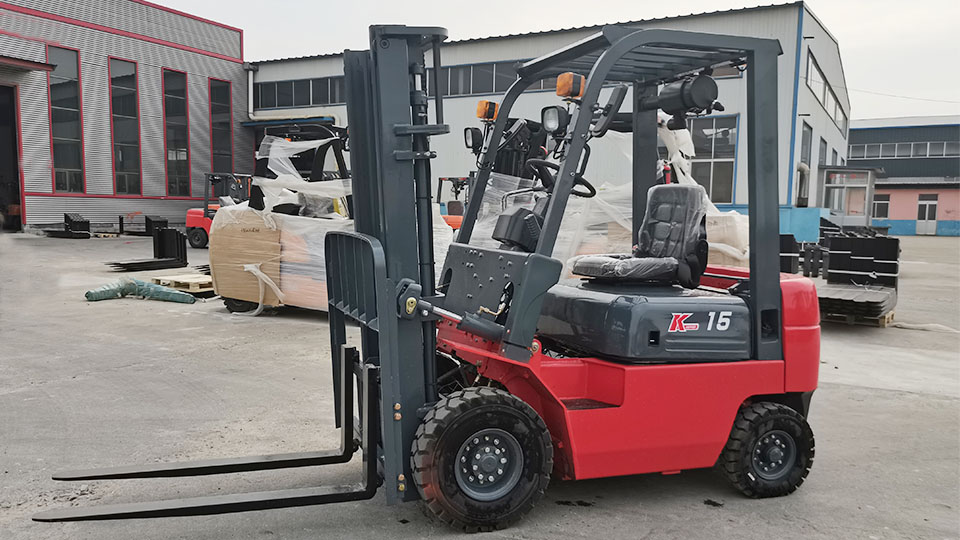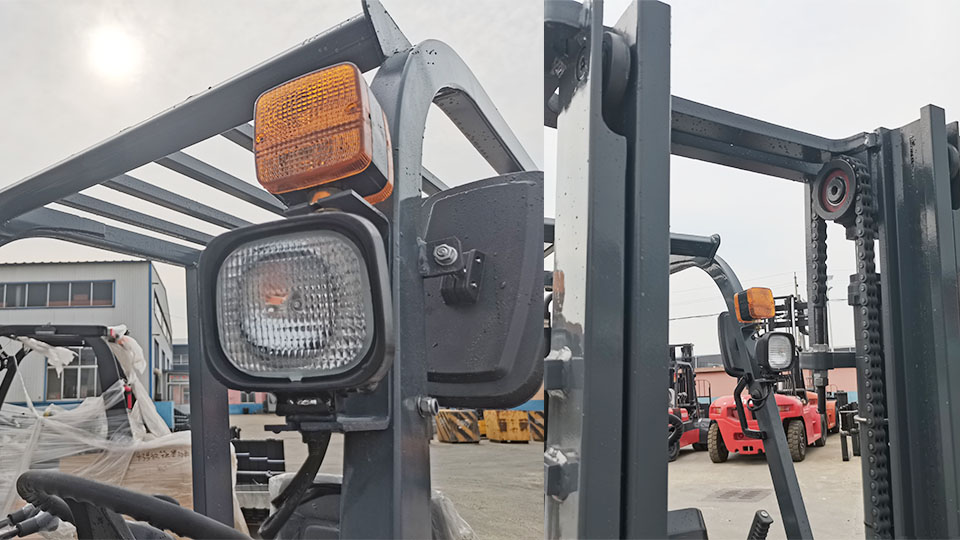
Achieving forklift certification is a mandatory and essential process for anyone operating a powered industrial truck (PIT) in the workplace, and is governed by strict regulatory standards, primarily the Occupational Safety and Health Administration (OSHA), under regulation 29 CFR 1910.178.1 The certification process is not a single course or test but a comprehensive, two-part training regimen followed by employer certification.2 The core places to get the training and evaluation necessary for certification fall into three main categories: Employer-Provided Training (Internal), Third-Party Training Providers (Online & In-Person), and Vocational/Technical Schools.
It is a crucial distinction that OSHA itself does not issue forklift certifications, licenses, or approve specific training programs.3 Instead, OSHA mandates that the employer is ultimately responsible for developing, implementing, and certifying that each operator is competent to operate a powered industrial truck safely at their specific worksite.4 Therefore, every legitimate path to certification must culminate in a formal evaluation and certification by the operator's employer.5
The Foundational Requirement: The OSHA Two-Part Training Standard
OSHA compliance hinges on a two-part training process: Formal Instruction and Practical Training & Evaluation.6 Regardless of where you get the training, both components must be completed for full, legal certification.7
1. Formal Instruction (The "Classroom" Portion)
This part covers the theoretical knowledge necessary for safe forklift operation.8 It can be delivered through various methods, including lectures, videos, software, online modules, or a combination thereof.9 Key topics include:
Operating instructions, warnings, and precautions
Forklift controls and instrumentation
Engine or motor operation
Steering and maneuvering
Vehicle capacity and stability (understanding the data plate and stability triangle)10
Vehicle inspection and maintenance
Operating limitations
2. Practical Training and Evaluation (The "Hands-On" Portion)
This critical step provides hands-on experience and must be conducted in the actual workplace on the specific type(s) of powered industrial truck(s) the operator will use.11 This training and subsequent evaluation must be performed by a "qualified person" designated by the employer.12

Demonstration: The qualified person shows the operator how to perform various tasks safely.13
Practical Exercises: The trainee operates the equipment under supervision.14
Performance Evaluation: The qualified person assesses the operator's ability to safely and competently perform all required tasks in the workplace, including navigating site-specific hazards.15
Employer Certification: Upon successful completion of both the formal and practical portions, the employer must create and maintain a written certification record.16
Primary Sources for Forklift Certification Training
The location and method of obtaining the training depend on an individual's employment status, the employer's resources, and their experience level.
A. Employer-Provided Training (The Most Common Path)
For most workers, the path to certification starts and ends with their employer.17 Because OSHA places the ultimate responsibility and certification authority on the employer, many companies—especially large logistics, manufacturing, or distribution centers—have in-house training programs.
Advantages:
Site-Specific Compliance: This training is inherently tailored to the specific equipment, environment, and hazards of the actual worksite, fulfilling a major OSHA requirement automatically.18
Cost-Effective for Employees: The cost of training is typically borne by the employer.
Immediate Application: The practical training is done on the exact truck the operator will use.1
How it Works:
Trainer Certification: The employer may utilize an employee who has completed a "Train-the-Trainer" course (often from a third-party provider) to become their in-house qualified person.
Formal Instruction: The in-house trainer conducts classroom instruction or uses an online/video course.20
Practical & Evaluation: The in-house trainer provides the hands-on practice and conducts the final performance evaluation on the jobsite.21
Certification: The employer signs the official certification record, which is valid for a maximum of three years.22
B. Third-Party Training Providers (Online & In-Person)
These providers specialize in safety compliance training and offer programs to individuals or to employers for their staff.23 They generally handle the Formal Instruction component.
1. Online Forklift Certification Courses
Online programs are highly popular for their flexibility, convenience, and low cost (typically 24$\$50-\$150$).25 They are best suited for the formal instruction requirement.
Advantages:
Flexibility: Operators can complete the "classroom" portion at their own pace, anytime, anywhere.26
Cost-Effective: Generally the cheapest option for the theoretical part.
Immediate Proof of Completion: A printable certificate is typically available instantly after passing the final written exam.27
Limitations & The Employer Hook:
Crucially, an online course alone does not fully certify an operator.28 It only satisfies the formal instruction part of the OSHA standard.29 The operator must still present the completion certificate to their employer, who is legally required to provide and oversee the practical training and on-site performance evaluation before the operator is considered fully certified.30 New operators with no prior experience will still need substantial hands-on time.31

Reputable Online Providers:
When searching for an online course, look for providers that explicitly state their courses are OSHA-compliant with standards 29 CFR 1910.178 (General Industry) and 1926.602(d) (Construction).32 Examples include:
OSHAcademy
CertifyMe.net
OSHA Education Center
2. Dedicated In-Person Training Centers
These training facilities offer a blended approach, typically a full-day or multi-day session that combines classroom instruction with limited hands-on practice on their equipment.
Advantages:
Structured Environment: Provides immediate feedback from an instructor and a focused learning environment.33
Immediate Practice: Allows new operators to get initial exposure and practice on a real machine, which is invaluable.34
Limitations & The Employer Hook:
While they provide hands-on practice, this is typically done on the training center's equipment, not the specific truck in the operator's actual workplace. Therefore, the operator's employer must still conduct a final, site-specific evaluation on the equipment the operator will be using at work before certification is complete.35
C. Vocational, Technical Colleges, and Career Centers
Some community colleges, technical schools, and local workforce/career centers offer comprehensive forklift operator training programs.
Advantages:
Comprehensive Curriculum: These programs often provide more extensive and in-depth training than a simple one-day course.
Certificate of Completion: Graduates receive a recognized certificate that demonstrates a high level of training completion.36
Potential Funding: Programs offered through government-funded career centers may be eligible for workforce development grants or subsidies.37
Limitations:
Like third-party centers, their practical training is usually on school-owned equipment. The operator's employer remains responsible for the final, site-specific evaluation and certification.38
The Employer's Ultimate Responsibility: Certification
It cannot be overstated: The certification itself is an employer-issued document.39 This document must include:
|
Element |
Requirement |
|
Operator's Name |
The name of the certified employee. |
|
Date of Training |
The date the formal instruction and practical training were completed. |
|
Date of Evaluation |
The date the final performance evaluation was conducted. |
|
Name of Trainer/Evaluator |
The name(s) of the person(s) who conducted the training and evaluation. |
This certification is valid for a maximum of three years.40
Recertification and Refresher Training
OSHA mandates that forklift operators must undergo refresher training and evaluation whenever:
They have been involved in an accident or near-miss incident.41
They have been observed operating the truck unsafely.
They are assigned to operate a different type of truck.42
A condition in the workplace changes (e.g., new racking, changes in traffic patterns) that could affect safe operation.43
Their performance is deemed unsatisfactory during an evaluation.
The three-year expiration period has passed.
Refresher training follows the same two-part formal and practical structure but may be shorter and tailored to the specific reason for the re-training.
Summary of the Certification Pathways
|
Pathway |
Formal Instruction (Theory) |
Practical Training & Evaluation |
Final Certification Issued By |
Best Suited For |
|
Employer-Provided |
In-house Trainer, Video, or Online Course |
On-site, using specific equipment. |
The Employer (The final authority) |
New hires, site-specific training. |
|
Online Course |
Self-paced, affordable online modules. |
Must be completed by the employer on-site. |
The Employer |
Experienced operators needing refresher/proof of theory. |
|
In-Person Training Center |
Classroom Instruction at the facility. |
Initial, limited practice on their equipment. Final evaluation by employer. |
The Employer |
New operators needing hands-on feel before work. |
|
Train-the-Trainer |
Course certifying an employee as a "Qualified Person." |
Enables the employee to conduct all training internally. |
The Employer |
Companies needing to train multiple staff members regularly. |
In conclusion, the most direct answer to "Where to get forklift certification?" is: Your employer is the only entity that can legally issue you the final certification, based on their having provided or validated a two-part training process. While online courses and third-party centers can provide the necessary theoretical instruction, they only satisfy the first step.44 True, legal, and compliant forklift certification requires that a qualified person conduct a performance evaluation on the specific equipment in the actual workplace, with the entire process certified by the operator's company.45
Name: selena
Mobile:+86-13176910558
Tel:+86-0535-2090977
Whatsapp:8613181602336
Email:vip@mingyuforklift.com
Add:Xiaqiu Town, Laizhou, Yantai City, Shandong Province, China